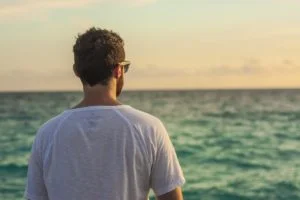
How the famous finches genetically evolved | Travel Blog
The Galapagos Islands History will always be associated with Charles Darwin. After visiting the islands in the 1830’s as ships naturalist on the HMS Beagle, Darwin was so astounded with the endemic wildlife on the islands that he set about thinking in great detail about what he had seen. This eventually led to the publication of his seminal On the Origin of the Species, and the formulation of the theory of evolution. This was a discovery that shook the world of science, religion, and society as a whole.
It is widely believed that it was the differing finch species on the islands that led Darwin to make his discovery. This is not strictly true. While Darwin was enchanted by the finches during his stay, his collection methods didn’t allow for the correct labeling of specimens (nobody at the time knew anything of evolution or was even looking for evidence). This meant he wasn’t able to spot the differences in his collections from differing islands. However, indirectly, the finches certainly caught his attention and led him to puzzle further the mysteries of the islands.
During his subsequent research, Darwin noticed that some of the finch species he had collected had different beaks. He started to think about why this could be. Could it be that the beaks had ‘evolved’ differently to suit the environment. The birds whose beaks suited the conditions best survived and thrived, producing more offspring and passing on these characteristics – naturally selecting the most appropriate genes.
These days the finches are one of the top Galapagos Islands tourist attractions as wildlife is refered. People come from all over the world to see these little birds that changed the world. There are fifteen species in total, each one making its home on a different island. Some species have small, rounded beaks that are perfect for breaking seeds. Others have longer beaks for catching insects hiding in cracks in the rocks. Other species use their beaks to model primitive tools from twigs, thus being able to locate food in the bark.
One species even feeds on the blood it draws from iguanas and other birds, again with a beak that seems like it was specially designed for the task at hand.
It seems almost incredible that these small birds beaks contained the secret to how life itself had evolved on the planet. It’s mysteries such as these that have made wildlife here Galapagos Islands a must-see tourist attractions. To see the finches and other incredible animals species , Contact Us today so we can help you arrange a fantastic Galapagos tour on board a wonderful cruise like the Seaman Journey for the best experience!
Take a look of these tour programs:
1. Amazon Tour: Amazon Basic Tour
2. Galapagos Tour: Eight days Galapagos land tour
3. Galapagos Land Tour: Nine days Galapagos Tour
4. Day tour in Galapagos: Kicker Rock Tour
Check Our Suggested Tours:
- Deluxe Southern Galapagos Islands Cruise Large Ship Voyage.
- Deluxe Center Island Cruise Large Ship Journey
- Exploring Galápagos: One Week Sailing the Islands
- Galapagos Isles Eastern Voyage 8-Day Relais Chateaux Luxury Cruise
- Elite Catamaran Galapagos cruise Itinerary B Southern & Central Islands 8 days
- Beaches and Bay Southern & Central Route
Check Our Galapagos Cruises:

